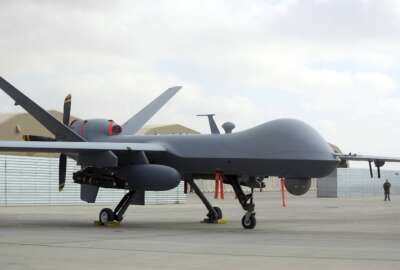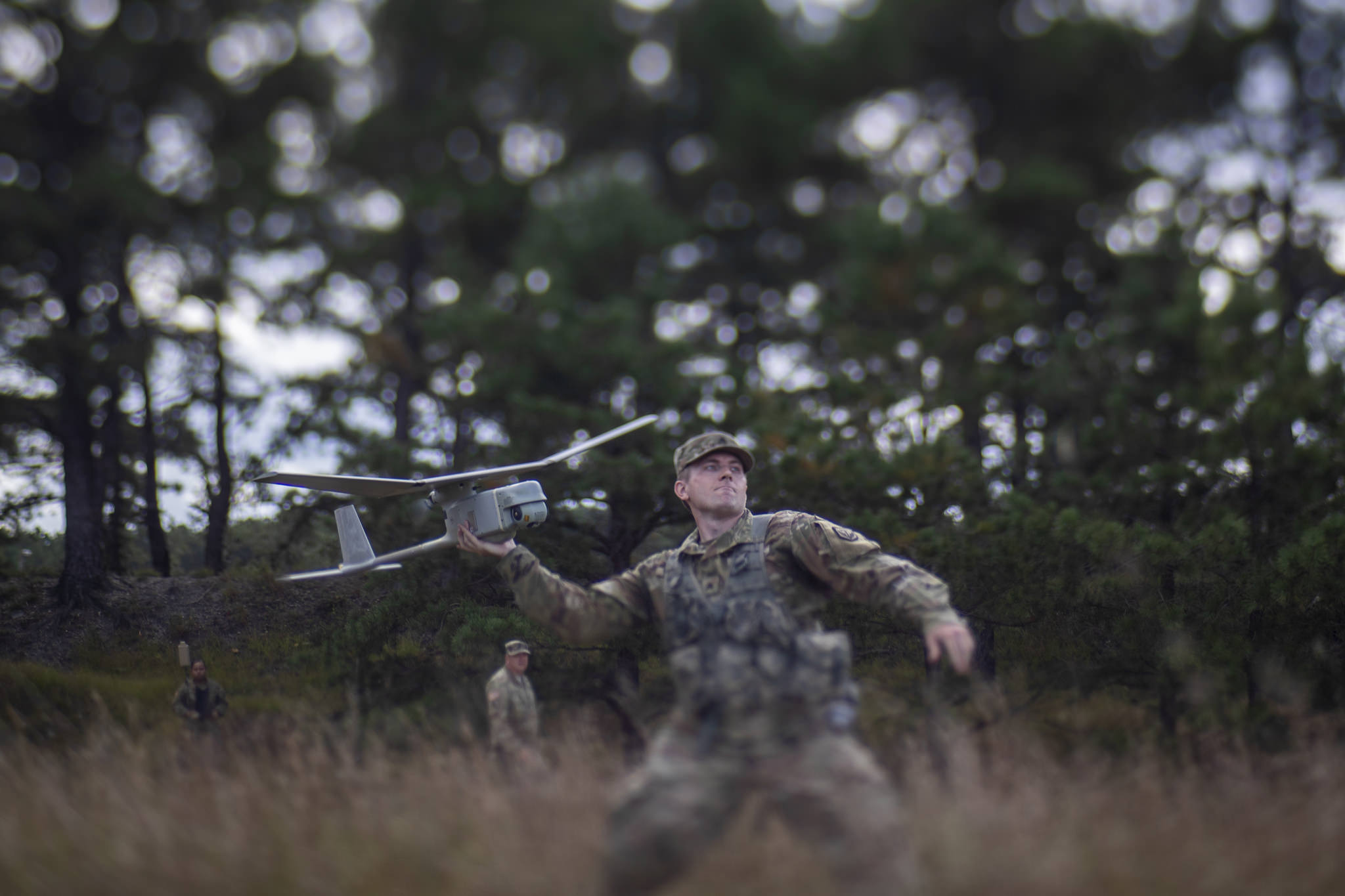DoD’s Replicator program must be repeatable to be successful
While the Defense Department’s Replicator program will be successful if it is able to get 2,000 drones within two years, speakers at Georgetown University’s...
The Defense Department should not just focus on short-term success for its Replicator program, which aims to scale small, cheap drones. Instead, DoD will need to replicate this initiative to ensure longer-term success to bridge the department’s valley of death.
Specifically, several speakers at Georgetown University’s Center for Security and Emerging Technology said the department needs to use Replicator as a model for other initiatives to bridge and scale technology; whether that means buying newer drones in the future or using this model to speed production, innovation and usage of another technology.
“It’s technically a success at the end of the 18 to 24 months if the DoD has at least 2,000 autonomous, attritable, relatively cheap systems, and we can clearly see that,” said Lauren Kahn, a senior research analyst at Georgetown’s Center for Security and Emerging Technology. “But what will actually be a success will be whether they can, pun intended, replicate this system again elsewhere to use it for other systems. And to go beyond that to regularly overcome this valley of death that’s so often spoken about to make sure that the DoD can actually access all of the resources that are available to it. [DoD] can do so readily, more easily, more widely and then translate those lessons learned across the department in a way that’s a little bit more cohesive.”
A key element of this will be sending a steady demand signal to the Defense Industrial Base. Leveraging industry is important to innovate and produce the technology that will help with missions. It will also ensure there is enough production of desired products.
“In industry we see movement in response to a clear demand signal and having that come from the Deputy Secretary of Defense really codifies the clarity of this signal,” said Jaret Riddick, senior fellow at CSET and former principal director for autonomy in the DoD’s Office of the Under Secretary for Research and Engineering.
“In the longer term, past 24 months, this really helps signal industry,” Michael O’Connor, a major in the Space Force and a Department of the Air Force fellow at CSET, said. “If we’re delivering in tranches, and you expect every 24 months or so there to be a new capability, a new tranche. This helps get at one of the problems that I think William LaPlante [the undersecretary of defense for acquisition and sustainment] identified, where you have huge waves of demand out of the military for capabilities for either commodities or new systems every time the world gets extra interesting. And then you have these peace dividends where industry has to scale back because the DoD is scaling back. If you can have this constant demand signal, it’s much easier to plan for. It’s much more efficient. It also helps keep a more healthy industrial base. And, ultimately, that’ll also be useful as something we can replicate in the future.”
Buying in tranches can be helpful because of the demand signal it sends to industry, but not everything should be bought in bulk. For example, maybe long-range drones are not available at the moment, but short-range drones are available and can be used as practice and to sharpen concepts until the long-range versions are ready.
“There’s enough time from the first tranche, hopefully, to get the ideas learned into the third tranche,” Igor Mikolic-Torreira, director of analysis at CSET said. “There is this pot of money called the Rapid Defense Experimentation Reserve – that’s several hundred million dollars. The steering group can be the one [that] says, ‘hey, this goes into that pot as a top priority fund.’ And now there, you’ve got another pot of money that’s building into how you’re going to develop these drones and develop the (concept of operations) because the CONOPS has to develop at the same time and evolve.”
However, in the short-term, it is not enough to have all the drones that DoD wants, the operators need to know how to properly use them and be part of the process.
“If in the near-term, in the next 18 to 24 months, 2,000-plus drones show up on the Pentagon’s doorstep, there’s also a need to make sure that the operators who are going to use them are aware of what’s coming down the pipe,” O’Connor said. “They know how to fit it into any potential plans, they’ve trained and know how to use it. There’s a short-term thing that needs to be accomplished as well. The fact that they’re going out and talking to the combatant commands is certainly the first step in the right direction.”
Another important element that could help Replicator succeed is the innovation steering group, which is co-chaired by Deputy Secretary of Defense Kathleen Hicks and the vice chairman of the Joint Chiefs of Staff. Riddick said the co-chairs give the group “gravitas.” It will focus on this topic to learn how to accelerate and get the proper processes in place, while having all the stakeholders in place.
The steering group will be important to ensure that all of the stakeholders have a seat at the table and to help solve issues faster.
“The steering group can really weigh in,” Mikolic-Torreira said. “As the deputy secretary mentioned, there is no lack of money, there’s funding available, the authorities are all there, but sometimes things aren’t quite in the right bucket and the deputy secretary is the one who could say, ‘okay, we’re going to package this and do some reprogramming, we’re going to get the color of this money changed.’ The right authorities and power are in that room, so as these decisions get made, the supporting bureaucratic processes can be driven to make it all happen.”
Mikolic-Torreira said that a previous steering group for the mine-resistant ambush protected (MRAP) tactical vehicle program and the counter IED fight helped to solve problems as they evolved. Similarly, this new steering group could do the same for Replicator.
Specifically, the prior steering group “was the one who got all the people and could drive that decision fast, which was key to doing whatever it was they were going to do to doing it quickly,” Mikolic-Torreira said. “It’s not like the bureaucracy doesn’t want to do the right thing, but normally, what is it we all write our point papers and say, ‘These are the pros of option one, these are the pros and cons of option two,’ and then they get debated. And then they get combined. And then everybody writes their comments and their outstanding opinions and then eventually it gets to somebody to make the decision.”
If Replicator is successful, at the end of the two-year period, it could “show us the way to accelerate,” Riddick said. “Then efforts that will come after that to sort of build on that momentum.”
Copyright © 2025 Federal News Network. All rights reserved. This website is not intended for users located within the European Economic Area.
Kirsten Errick covers the Defense Department for Federal News Network. She previously reported on federal technology for Nextgov on topics ranging from space to the federal tech workforce. She has a Master’s in Journalism from Georgetown University and a B.A. in Communication from Villanova University.
Follow @kerrickWFED






